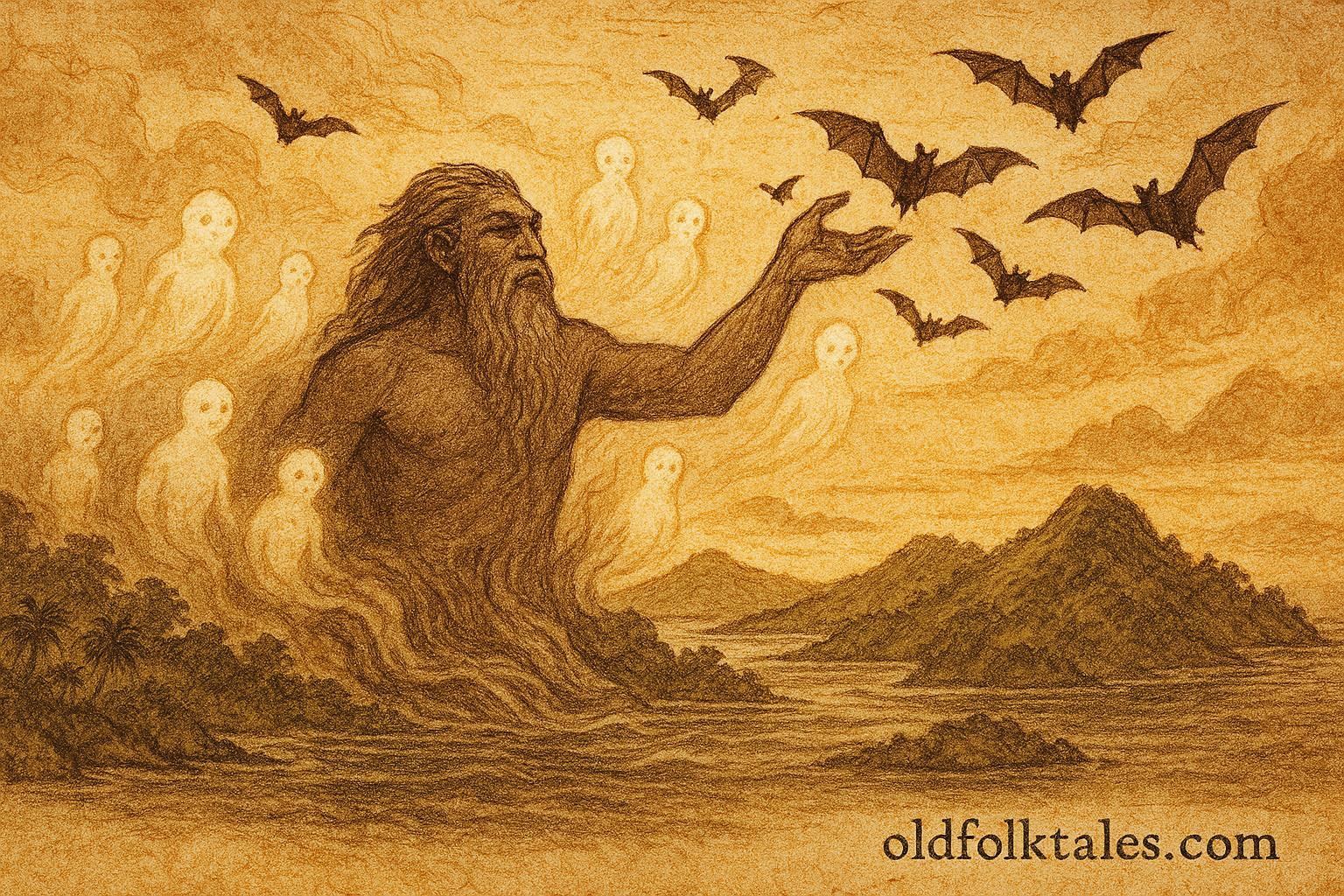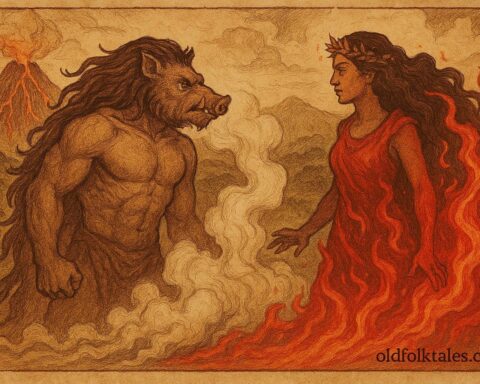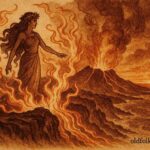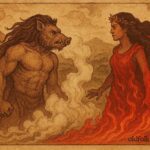In the time before memory, when the world was still new and the skies were closer to the earth, the people of Samoa faced a famine so severe that even the sea seemed to weep for them. The sun scorched the soil, rivers thinned to threads of silver, and the breadfruit trees bore no fruit. Fish hid deep in the ocean’s heart, and the winds carried only the dry sighs of hunger.
Men and women prayed to the heavens for mercy. They brought offerings to the altars of Tangaloa, god of the sky, and chanted songs to the spirits of their ancestors. But no answer came. Days stretched into weeks, and hope waned like the moon. Children cried with empty bellies, and the old ones whispered that the gods had turned away.
Far below, in the shadowed depths of Pulotu, the underworld where spirits dwell after death, another god watched and listened. His name was Saveasi’uleo, ruler of the unseen realm, guardian of souls, and keeper of balance between life and death. He sat upon his throne of coral and darkness, surrounded by quiet waters and the soft glow of ancestral spirits. Though his kingdom lay beyond mortal sight, Saveasi’uleo was not a god without compassion.
From his seat, he heard the faint cries of the living carried down by the winds of the spirit world. His heart was moved. The people above suffered, but their pain rippled through all realms, even to Pulotu, disturbing the sacred harmony between life and death.
“If life perishes completely,” he murmured, “then death, too, shall have no meaning.”
He rose, his form vast as the night sky, and called forth his attendants, the spirits of the underworld who took the shape of great pe’a, or flying foxes. Their wings stretched wide, soft as dusk and dark as the spaces between stars.
“Go,” Saveasi’uleo commanded, his voice deep as thunder rolling through caverns. “Rise into the world of light. Bring sustenance to my children above. Let them know that even from death, life may yet be born.”
The flying foxes bowed, their eyes gleaming like drops of amber. They ascended through the caverns of Pulotu, passing through shimmering veils where the worlds of the dead and the living intertwined. When they broke through to the surface, the air burst with movement, thousands of winged shapes emerging into the blinding sunlight.
The people of Samoa looked up in awe as the sky filled with dark, fluttering forms. Never had they seen such creatures. The flying foxes swooped through the forests, feeding on the ripened fruits that had begun to grow again through divine blessing. They plucked breadfruit, mangoes, and pandanus, carrying them to the starving villages.
Where the bats flew, green returned to the land. Their wings scattered seeds across the soil, and rain followed in their wake. Soon the rivers swelled once more, and the sea began to sparkle with fish. The people ate and sang with gratitude, giving thanks to the god who had heard their cries, though they did not know his name.
But the priests of the temples, wise in the ways of spirit and sign, understood. They looked upon the bats and saw the truth: these were not mere animals, but messengers from Pulotu, sacred bridges between life and death, between light and shadow.
“The pe’a are the hands of Saveasi’uleo,” they said. “They remind us that life rises even from the depths of darkness.”
From that day forward, the Samoans treated the flying foxes with reverence. No hunter would dare harm one, for to wound a flying fox was to offend the god who had once saved their ancestors. Their cries at dusk were heard as blessings, and their silhouettes against the evening sky were seen as symbols of endurance, proof that even from the underworld, compassion could ascend.
And so the flying fox became a creature of dual worlds: a guardian of the living, a spirit of the dead, a reminder that the cycle of existence is eternal and whole.
Discover the adventures of Māui, Pele, and Tangaloa in the timeless Polynesian oral tradition
Moral Lesson
Life and death are not opposites but reflections of one another. Compassion flows through all realms, and the divine balance is sustained when creation and remembrance walk hand in hand.
Knowledge Check
- Who is Saveasi’uleo in Samoan mythology?
Saveasi’uleo is the god of Pulotu, the underworld, who governs the spirits of the dead and maintains balance between life and death. - What event caused Saveasi’uleo to send the flying foxes?
A great famine struck the islands, threatening to wipe out life and disrupt the harmony between the living and the dead. - What sacred task did the flying foxes perform?
They brought fruits from the underworld to the people, spreading seeds and restoring fertility to the land. - What do the flying foxes symbolize in this story?
They represent divine compassion, life emerging from death, and the sacred balance of nature. - Why did the Samoans come to revere the flying fox?
They saw the bats as messengers of Saveasi’uleo and protectors of life, deserving of respect and protection. - What moral lesson does this folktale teach?
That generosity and harmony sustain both life and spirit, and that even darkness holds the seeds of renewal.
Source: Adapted from Samoan Myths and Legends collected by E.W. Gibb (1907).
Cultural Origin: Samoan folktale, Samoa (Polynesia)












